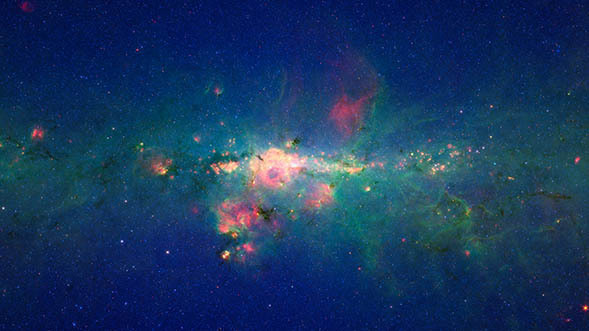Program Management

In most previous flight development programs, the design and requirements of the mission were completed first, and then the contractors were brought in to bid on development. In an effort to constrain costs, the Spitzer Project embarked on an experimental approach. The Project Team members, including the industrial contractors, were solicited early enough to enable full participation in the preliminary design process. The entire Spitzer team worked closely together during the design and the development phases of Spitzer.
- Caltech's Jet Propulsion Laboratory in Pasadena, California retained responsibility for overall project management, systems engineering, and flight operations.
- Lockheed Martin Space Systems Company (Sunnyvale, California) was responsible for the spacecraft and for the system integration and testing.
- Ball Aerospace and Technologies Corporation (Boulder, Colorado) was responsible for the cryogenic telescope assembly (CTA).
- The three science instruments were designed and built by university-based research teams:
- Development of the InfraRed Array Camera was managed by the Smithsonian Astrophysical Observatory (Cambridge, Massachusetts) and built at the NASA Goddard Space Flight Center (Greenbelt, Maryland).
- The Infrared Spectrograph was designed and built at Cornell University (Ithaca, New York).
- The Multiband Imaging Photometer for Spitzer was designed and fabricated at the University of Arizona (Tucson, Arizona).
- Science operations for Spitzer were based at the Spitzer Science Center on the campus of the California Institute of Technology in Pasadena.



